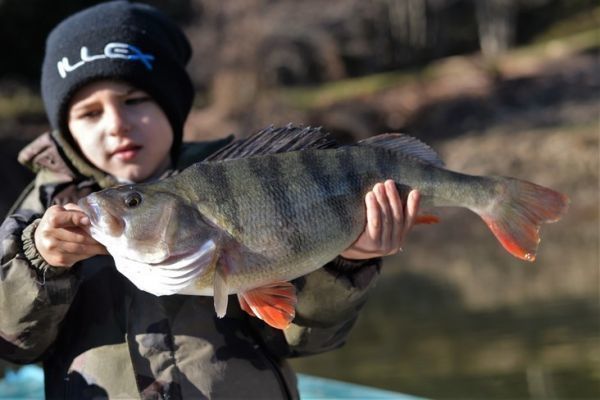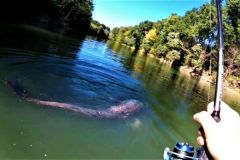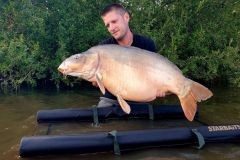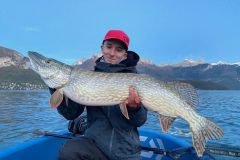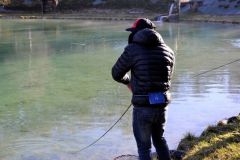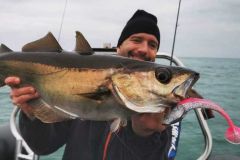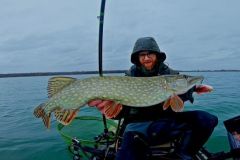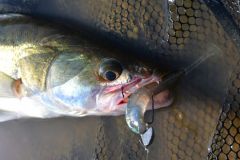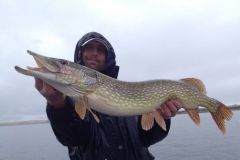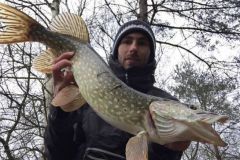What's a big pole?
In the vast world of lure fishing for carnivorous fish, stalking perch has a place of its own. Along with pike, this percid, which is very present in our waters, was the second most important freshwater carnivore, before the arrival of pike-perch, black-bass, catfish and asp.
In my opinion, before laying the foundations for optimizing your perch fishing, it's best to study the fish you're going to target.
In France, a perch is considered a big fish when it reaches or exceeds 40 cm.
In other European countries, such as the Netherlands, Belgium, Sweden or Germany, a big perch is a fish of 45 cm or even 50 cm.
Perch grow rather slowly. In the first year, in rich environments, a perch can grow by 10 cm. Then, depending on the volume of water and food available, the perch can grow by only 2 to 4 cm per year!
A 35 cm pole in France is on average 8 years old. A pole over 40 cm will usually be more than 10 years old!
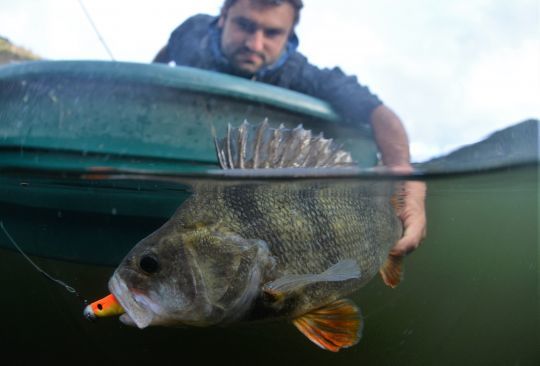
To track down big perch, you'll need to focus on rich environments that encourage fairly rapid growth, and especially those that are fairly voluminous.
Large lakes, gravel pits and rivers are ideal areas for catching record-breaking perch.
Because when perch are too abundant in a given environment, they are faced with the phenomenon of dwarfism. The excessive density of this percid in a closed body of water means that it no longer grows, or grows extremely slowly.
While small perch are voracious, opportunistic hunters, pouncing on anything that moves, large perch are more selective and moody.
Large perch are solitary or in shoals of a few individuals. They evolve in strategic areas, providing comfort and abundant food. All structures hold perch, especially large ones.
Landforms, dead trees, roots, submerged ruins, bridge piers, quays and engineering structures are the areas to look for perch.
But how do you go about it? Do you go for the broad strokes or the fine points?
Power fishing
Power fishing is a fishing strategy, or even a concept, that consists of combing as much of the water as possible with a lure that has a strong presence to catch active fish.
This is a fishing strategy established in the USA for black bass fishing competitions. The basic lures for this strategy are spinnerbaits, crankbaits, chatterbaits or large soft lures...
They have the characteristic of being very present in the water and inciting. They emit numerous vibratory and sonic stimuli and stir up a large volume of water.
They are formidable on large stretches of water, when you need to locate areas of active, hunting fish receptive to these strong signals.
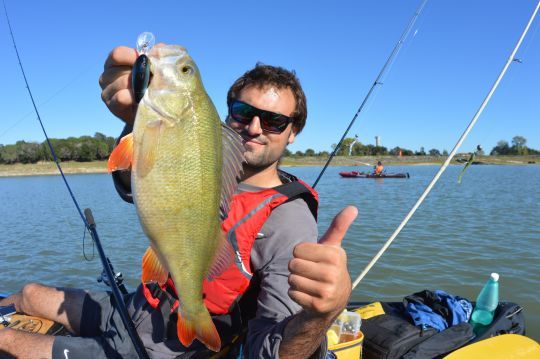
It's also worth noting that many large perch specimens are caught while the angler was targeting pike with a large or even very large lure.
Big perch are predators at the top of the food pyramid and no longer fear many people. The reaction of perch to these lures is often aggressive and non-food, in order to get rid of an intruder on their territory.
I reserve this powerfishing approach for perch fishing from boats, kayaks or float tubes.
I don't just fish the riverbanks; there are plenty of good spots to catch fish. What's more, the boat's drift easily sets the pace for prospecting.
I don't insist for long, preferring to scan as many positions as possible, whether those I spot on the surface (dead trees, deck plaice...) or on the seabed using a depth sounder.
What's more, if the area holds pike, black-bass or catfish, I wouldn't hesitate to fish relatively big to hit as many fish species as possible in addition to the big perch.
I use a casting set which minimizes fatigue and is better suited to prospecting fishing. A fairly parabolic 2.10 m rod capable of casting 40 gram lures is ideal. This relatively powerful set will enable you to cope with big surprise fish, but above all to cast and work heavy, vibrating lures with maximum comfort. The casting reel (spinning drum) should have a moderate or even low ratio, to favour torque (strength) over speed, especially when retrieving lures that pull in the line, such as spinnerbaits or crankbaits with a large lip.
On the other hand, big perch, which are often old fish, can be extremely difficult to lure. In this case, the approach is the opposite.
Fine peaches
As the name suggests, finesse fishing combines a range of lures and fine approaches to fool educated fish.
Stalking big perch with a "finesse" approach clearly emerged with streetfishing. Lures derived from black bass fishing, the philosophy of downsizing and the advent of rockfishing have enabled the most visionary anglers to tap into these worlds to track perch. In fact, this fishing philosophy is more Japanese than American.
Perch stalking has technically gone up a notch since then, more than 10 years ago now. Techniques such as dropshot, split shot, micro jigs and finesse lures (flexible lures with fine tails and no vibrating appendages) are used to fool educated, hard-working predators like big perch.
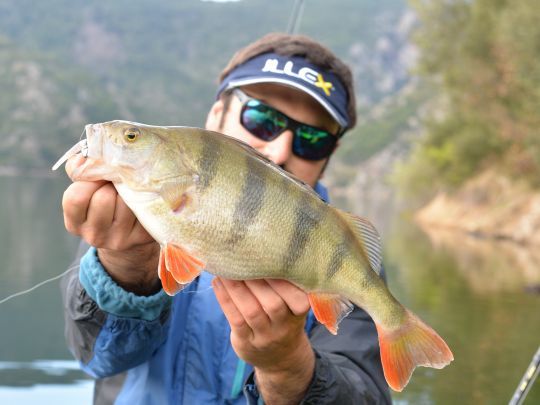
Advanced equipment allows us to refine set-ups, maximise sensitivity and fish surgically on light to ultra-light sets for big perch.
Whether for balls, drop shot weights, splitshot weights or sinker heads, tungsten weights, rather than lead, provide a better feel for the nature of the bottom. Tungsten is harder than lead and therefore transmits waves better when it comes into contact with the bottom or an obstacle. It is more resonant. It is also denser than lead. In other words, for an equivalent volume, tungsten will be heavier than lead. Ideal for a discreet weight and a compact, clean rig.
Fine braids and high-performance fluorocarbon also help to refine set-ups and make presentations more natural. Solid tip rods (rockfishing) can be used to animate micro-lures to the millimetre, but also to transmit the slightest information to the angler.
I'd like to come back to the "downsizing" approach which, in my opinion, is at the heart of "finesse" fishing. Downsizing literally means "reducing the size of the lure". The lures used are often between 2 and 3 inches in size, or 5 to 8 cm. This is based on the observation that large, highly solicited and educated fish will be impacted by the presence of anglers.
Fish then adapt their feeding and territory defense behaviors to be less vulnerable to fishermen's assaults. They no longer respond to stimuli and signals that are too vibratory or powerful. Or at least, they respond negatively. These powerful signals are synonymous with danger and fishermen...
To fool these fish, you'll need to present the lure in the most natural way possible. The size of the lure is then reduced to limit the movement of too large a volume of water. Vibratory appendages are reduced or eliminated. Colors are natural and imitative.
As these lures are not very common, it's best to focus on the right spots, fishing slowly to give a big perch enough time to spot your lure.
I use these finesse approaches extensively in streetfishing, from the shore and especially in competition.
I use a 2 to 2.20 m solid tip spinning rod with ML (medium light) to UL (ultra light) power. I use a spinning reel (fixed spool) in sizes 1000 to 2500 with fine braid in PE 0.3 to PE 0.8 (i.e. between 8 and 14/100).
I prefer to use moderate or even high ratios to maintain maximum contact with the lure, which is almost constantly groping the bottom.
I finish the line with a fluorocarbon leader from 16 to 24/100, depending on the size of the fish and the size of the fish. Fluorocarbon has several advantages over nylon for fine stalking of big perch.
It is less elastic, which maximizes the transmission of information in the line. It is also more discreet because its refractive index is very close to that of water and, lastly, it is more resistant to abrasion, which allows you to be more serene when insisting in logjams and congested areas where large poles are found. However, it has slightly less tensile strength than nylon for the same diameter.
In conclusion, you will have understood that stalking big bass is above all a question of adapting to the environment. On your approach, whether from shore or from a boat, one strategy will work better than the other, given that they are almost opposites! Adaptation is your best weapon when trying to catch one of these majestic perch.

 /
/ 